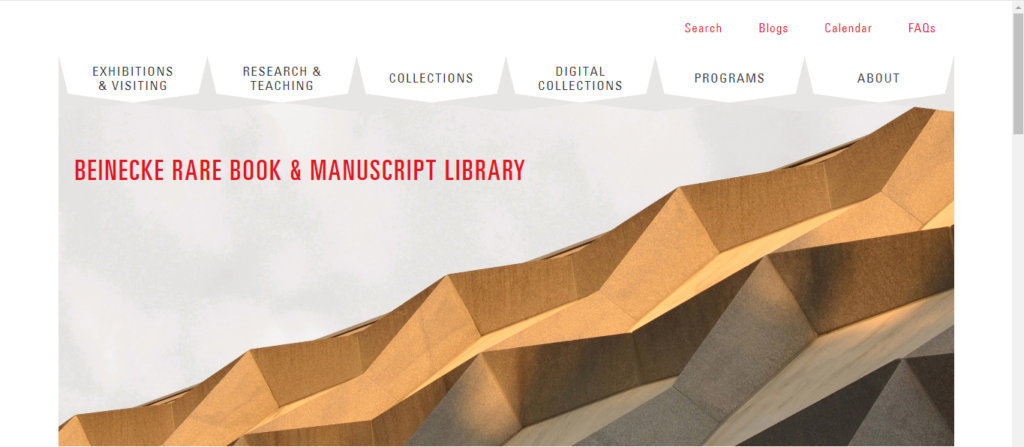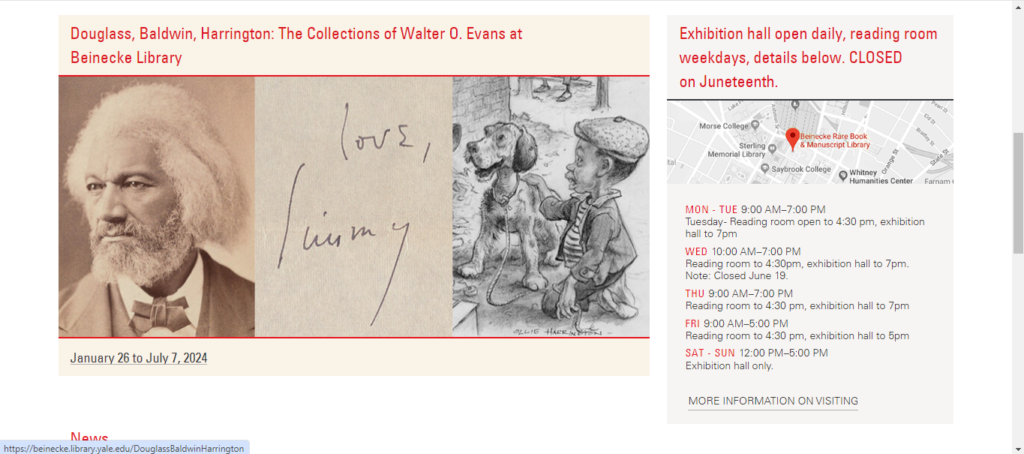Introduction to Beinecke Library
The Beinecke Rare Book and Manuscript Library, situated in New Haven, Connecticut, is a cornerstone of pride for Yale University. Renowned for its extensive collection of rare books and manuscripts, the Beinecke Library is not only a treasure trove of historical documents but also an architectural marvel. As one of the most distinguished libraries in the United States dedicated to rare documents, it attracts scholars, researchers, and bibliophiles from across the globe, making it an indispensable resource for academic and historical research.

Established in 1963, the Beinecke Library was designed by the architect Gordon Bunshaft. The building’s unique design is characterized by its stark yet elegant use of marble and granite, which allows natural light to filter through while protecting the rare and fragile materials housed within. This innovative approach ensures that the library’s precious contents are preserved under optimal conditions, while also providing a visually striking and serene environment for visitors and researchers alike.
Beyond its architectural splendor, the Beinecke Library’s collection is unparalleled. Housing over a million volumes and several million manuscripts, the library’s holdings encompass a wide array of subjects, from ancient texts to contemporary literature. Among its most notable possessions are the Gutenberg Bible, one of the earliest books printed with movable type, and the Voynich Manuscript, a mysterious and undeciphered codex that continues to intrigue scholars. Additionally, the Beinecke Library serves as a repository for personal papers and archives, including those of prominent writers, artists, and cultural figures, further enriching its vast and diverse collection.
The Beinecke Library’s significance extends beyond Yale University, acting as an international resource for scholars and researchers. Its extensive digital archives and collaborative initiatives facilitate global access to its treasures, ensuring that the knowledge and cultural heritage contained within its walls are shared with the world. As a beacon of academic excellence and historical preservation, the Beinecke Rare Book and Manuscript Library stands as a testament to Yale University’s commitment to education, research, and the enduring power of the written word.
Architectural Marvel
The Beinecke Rare Book and Manuscript Library stands as an architectural marvel at Yale University, distinguished by its unique cubed, windowless exterior. Completed in 1963, the library’s striking geometric design commands attention and sets it apart from other campus buildings. Its façade, composed of translucent veined marble panels, is not only aesthetically captivating but also serves a functional purpose. This innovative use of marble allows a delicate infusion of natural light to filter through, creating an ethereal glow within the library while safeguarding its invaluable contents from harmful sun exposure.
The library’s design, masterminded by architect Gordon Bunshaft of Skidmore, Owings & Merrill, exemplifies both form and function. The marble panels are framed in granite, further enhancing the structural integrity and visual appeal of the library. The interplay of light and material creates a serene atmosphere conducive to scholarly research and reflection. The Beinecke Library’s design achieves a delicate balance between transparency and protection, ensuring that rare manuscripts and books are preserved under optimal conditions.
Adding to the architectural intrigue, the Beinecke Library features sunken levels that impart an illusion of the building floating above the plaza. This design choice not only maximizes the use of space but also integrates the library seamlessly into the surrounding environment. The plaza itself, adorned with sculptures by Isamu Noguchi, complements the library’s modernist aesthetic and provides a tranquil outdoor space for visitors and students alike.
The Beinecke Rare Book and Manuscript Library is more than just a repository of rare texts; it is a testament to innovative architectural design and enduring beauty. Its iconic structure continues to inspire awe and admiration, making it a true jewel of Yale University.

Interior Design and Features
Upon entering the Beinecke Rare Book and Manuscript Library, visitors are immediately captivated by its stunning interior design. Central to this awe-inspiring space is a five-story, climate-controlled, glass-enclosed tower that houses an extensive collection of rare books. This architectural marvel not only serves a functional purpose but also stands as a visual and symbolic centerpiece of the library. The glass tower is carefully engineered to maintain optimal conditions, ensuring that the invaluable materials within are protected from environmental damage such as fluctuations in temperature and humidity.
The design of the interior extends beyond mere functionality to incorporate a unique aesthetic appeal. The shelves within the glass tower are sculptural in nature, transforming the storage of books into a striking visual experience. These shelves are meticulously crafted, showcasing the library’s dedication to both the preservation and presentation of its collections. The interplay of light through the glass and the structured arrangement of the books create an almost ethereal ambiance, inviting visitors to appreciate the intersection of art and scholarship.
Additionally, the interior space of the library is designed to facilitate public viewing without compromising the integrity of the rare materials. Visitors can observe the vast collection from multiple vantage points, gaining an appreciation for the meticulous care that goes into preserving these historical treasures. This thoughtful design ensures that while the books are safeguarded, they are also accessible to scholars and the general public, fostering an environment of learning and discovery.
The Beinecke Rare Book and Manuscript Library’s interior is a testament to innovative design and meticulous preservation. The glass-enclosed tower, with its climate control and sculptural shelves, not only protects the rare collections but also enhances the visitor experience, making the library a true jewel of Yale University.
The Marble Walls
The Beinecke Rare Book and Manuscript Library, an architectural marvel at Yale University, is renowned for its unique construction, particularly its windowless cube design adorned with translucent marble walls. These marble panels are not merely an aesthetic choice; they serve a crucial functional purpose. By reducing the effects of light, the marble walls ensure that the rare materials housed within the library are preserved without suffering damage from direct sunlight.
The marble walls of the Beinecke Library are composed of thin sheets of Vermont marble, which are only 1.25 inches thick. This specific thickness allows them to filter and refract natural light, transforming harsh sunlight into a soft, diffused glow that permeates the library’s interior. This ethereal ambiance not only enhances the visual experience but also provides an optimal environment for preserving the library’s rare and delicate collection of books and manuscripts.
One of the most striking aspects of the marble walls is their ability to create a dynamic interplay between light and shadow. As the intensity and angle of sunlight change throughout the day, the walls exhibit different patterns and hues, offering an ever-changing visual spectacle. This interplay not only underscores the library’s architectural brilliance but also serves as a subtle reminder of the temporal nature of the light-sensitive materials housed within.
The design of the Beinecke Library’s marble walls exemplifies a thoughtful balance between aesthetics and functionality. By shielding the library’s precious contents from direct sunlight while creating a serene and contemplative atmosphere, the translucent marble walls stand as a testament to innovative architectural solutions in the service of cultural preservation. This meticulous attention to both form and function ensures that the Beinecke Library remains not only a jewel of Yale University but also a sanctuary for rare literary treasures.
Collections and Treasures
The Beinecke Rare Book and Manuscript Library, an esteemed repository located at Yale University, boasts a collection that is both vast and invaluable. Among its most distinguished holdings is one of the 48 surviving Gutenberg Bibles, printed in 1455, which stands as a testament to the revolutionary advent of movable type printing. This rare artifact, a cornerstone in the history of literature, draws scholars and enthusiasts from around the world.
In addition to the Gutenberg Bible, the Beinecke Library is custodian to original manuscripts from literary luminaries spanning various eras and genres. The collection includes writings from Benjamin Franklin, whose contributions to literature and political thought have left an indelible mark on American history. The library also treasures original works by Charles Dickens, offering a glimpse into the creative process of one of the most influential novelists of the Victorian era.
The literary treasure trove extends to the works of Johann Wolfgang von Goethe, providing invaluable insight into the mind of the German literary giant. The inclusion of such diverse and historically significant manuscripts underscores the library’s commitment to preserving the intellectual heritage of humanity. These collections serve as a vital resource for researchers, historians, and literature fans, making the Beinecke Library an unparalleled destination for academic inquiry.
Furthermore, the library’s holdings are not confined to Western literature alone. It encompasses a wide array of rare books and manuscripts that span multiple continents and languages, reflecting a truly global perspective. This diversity enriches the academic landscape by offering a more comprehensive understanding of world literature and culture.
Overall, the Beinecke Library’s impressive array of rare books and manuscripts not only preserves but also celebrates the rich tapestry of human thought and creativity. It stands as a beacon of knowledge, inviting scholars and literature aficionados to delve into its vast and varied collections.
International Resource
The Beinecke Rare Book and Manuscript Library stands as a beacon for researchers, historians, and bibliophiles from across the globe. As an international resource, it offers an unparalleled collection of rare documents and manuscripts, providing invaluable insights into various fields of study. Scholars from diverse disciplines find the library’s extensive archives to be an essential destination for primary sources and original texts.
The library’s reputation as a premier institution for rare books is well-earned. Its vast collection spans centuries and includes some of the most significant works in literature, science, history, and the arts. These materials are meticulously preserved and made accessible to researchers, ensuring that the knowledge contained within them continues to inform and inspire future generations.
The Beinecke Library’s global significance is further underscored by its role in facilitating scholarly exchanges and collaborations. Researchers from different countries frequently visit the library to delve into its rich collections, contributing to a vibrant intellectual community. The library also hosts numerous exhibitions, lectures, and conferences, fostering an environment where ideas and knowledge are freely exchanged.
Moreover, the Beinecke’s commitment to digitization has expanded its reach beyond physical boundaries. Many of its rare documents and manuscripts are available online, allowing scholars worldwide to access these valuable resources remotely. This digital accessibility underscores the library’s dedication to making its collections available to a broader audience, further cementing its status as an indispensable international resource.
In essence, the Beinecke Rare Book and Manuscript Library’s extensive and diverse collections make it a cornerstone of academic and cultural research. Its role as an international resource is vital, as it continues to attract and support a global community of scholars dedicated to the pursuit of knowledge and the preservation of cultural heritage.
Preservation and Conservation
The Beinecke Rare Book and Manuscript Library is renowned for its commitment to the preservation and conservation of its rare materials. Central to this mission is the library’s climate-controlled environment, meticulously maintained within the iconic glass tower. The precise regulation of temperature and humidity levels is crucial in preventing the deterioration of delicate books and manuscripts, ensuring their longevity.
In addition to the climate control, the library’s protective marble walls play a significant role in shielding the collection from harmful light exposure. The marble’s unique translucency allows for a filtered, diffused light that minimizes potential damage while still illuminating the interior. This architectural feature is a testament to the careful planning and design dedicated to the preservation of the library’s invaluable holdings.
Furthermore, the Beinecke Library employs state-of-the-art techniques and practices in its conservation efforts. Specialized staff members, including conservators and preservationists, are tasked with the ongoing care and maintenance of the collection. They utilize advanced methods to repair and stabilize fragile materials, employing techniques that are both minimally invasive and reversible whenever possible. This approach ensures that the original integrity of the items is retained.
In addition to physical conservation efforts, the Beinecke Library is also actively engaged in digital preservation. By digitizing many of its rare and unique items, the library not only broadens access to its collection but also protects the physical materials from excessive handling. This dual strategy of physical and digital preservation is critical in maintaining the library’s mission of safeguarding its treasures for future generations.
Overall, the Beinecke Rare Book and Manuscript Library exemplifies excellence in preservation and conservation, combining innovative technology with careful stewardship to protect its rare and valuable collection. The library’s efforts ensure that these cultural and historical artifacts will continue to be available for research, education, and enjoyment long into the future.
Visitor Experience
Visitors to the Beinecke Rare Book and Manuscript Library can expect an awe-inspiring experience that blends architectural grandeur with historical significance. As one approaches the library, the striking modernist design of the building immediately captures attention, with its marble and granite exterior exuding an air of timeless elegance. This visual appeal sets the stage for the treasures housed within.
Upon entering the library, guests are greeted by a mesmerizing sight: the central glass tower, which houses thousands of rare books, standing as a testament to human knowledge and achievement. The filtered light that permeates the space through the translucent marble walls creates an ethereal ambiance, enhancing the sense of reverence for the collections held here.
Guided tours are available for those who wish to delve deeper into the library’s offerings. These tours provide a comprehensive overview of the library’s history, architecture, and the significance of its collection. Highly knowledgeable guides share insights into some of the library’s most valuable and interesting items, ensuring that each visitor leaves with a greater understanding and appreciation of the world of rare books and manuscripts.
In addition to guided tours, the Beinecke Library hosts a variety of exhibitions throughout the year. These exhibitions showcase specific themes or highlights from the library’s vast collection, offering visitors the opportunity to explore different facets of literary and historical heritage. Whether it’s an exhibition on medieval manuscripts, early printed books, or modern literary archives, there is always something to captivate the interest of scholars, students, and casual visitors alike.
For scholars and researchers, the Beinecke Library offers a wealth of resources and a conducive environment for study. Access to the reading rooms allows for close examination of rare materials, fostering an atmosphere of academic pursuit and discovery. For students and curious tourists, the library provides a fascinating glimpse into the preservation and study of humanity’s written legacy.
Overall, a visit to the Beinecke Rare Book and Manuscript Library is an enriching experience that combines visual splendor with intellectual engagement, making it a must-see destination for anyone visiting Yale University.













